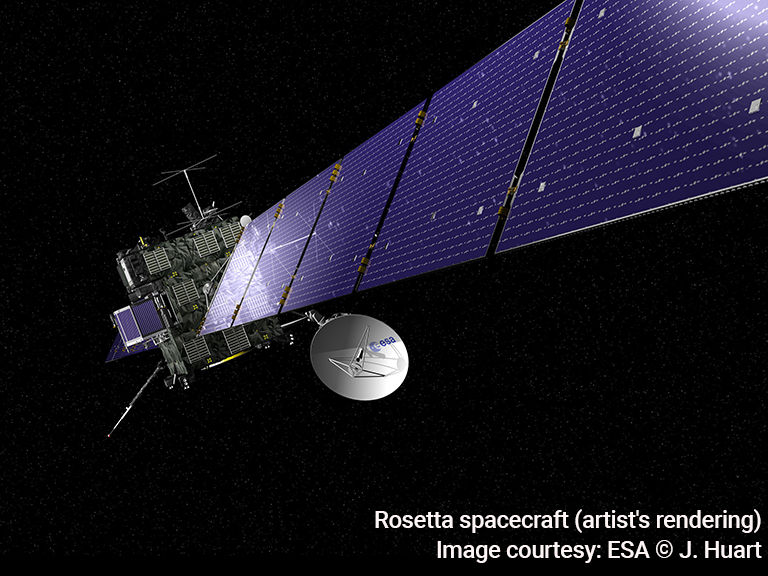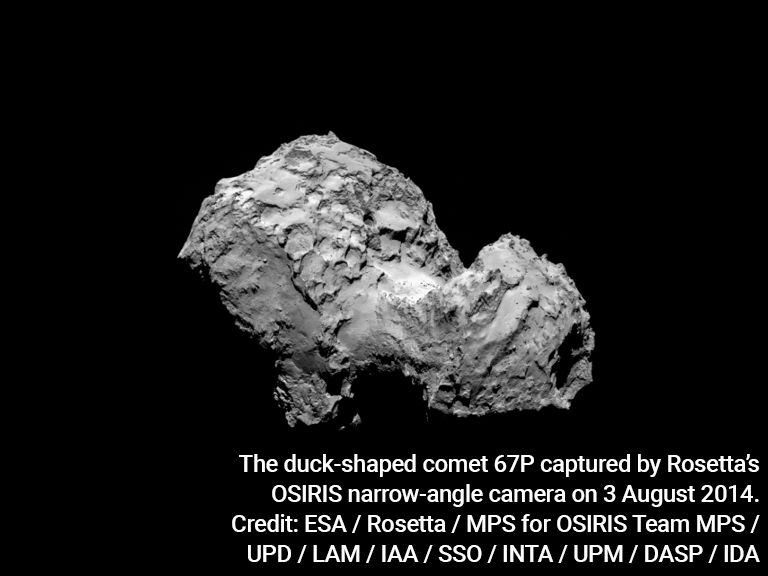Lika & Rosetta mission: Over 12 years of operational lifetime in the space
Lika Electronic, heading for space!
Innovative solutions that make a difference to the world always come from ambitious challenges and creative synergies. Communication and interaction between advanced research and practical engineering experience are at the heart of any effort at developing intelligent products and cutting edge systems. This is the reason why, since its inception in 1982, Lika Electronic has been working in close cooperation with universities and research centres as well as key suppliers and customers from all over the world in order to build sophisticated, tailor-made motion control solutions and open up new opportunities. One of the major projects in recent years has brought about great technological advances and significant impacts on work and daily practice, providing huge benefits to the company. Relying on its high-tech skills and ingenuity as well as the in-depth expertise, Lika Electronic decided to take up the challenge together with leading technology partners to build a state-of-the-art, ultra-reliable motion control encoder in an unprecedented space endeavour. I38 SPACE optical encoder remained operational to the very end of Rosetta mission and allowed the WAC and NAC cameras to capture lots of stunning images for over 12 years.

Rosetta was the ESA European Space Agency's scientific project involving a consortium of more than 50 contractors (private companies, institutes and universities) in Europe and the United States. It was unique across all the space projects because it was the first mission planned to orbit and land on a comet. It ended September 2016. Rosetta probe (Figure) was launched by an Ariane 5 rocket on 2 March 2004 from Europe's Spaceport in Kourou, French Guiana on a journey of 10-plus years to the comet 67P/Churyumov-Gerasimenko.

It entered the orbit around the comet's nucleus in first days of August 2014 after a series of gravity assist manoeuvres to gain enough orbital energy, with three swing-bys at Earth (March 2005, November 2007 and November 2009) and one at Mars (February 2007). En route to the comet, the star rover flew by the asteroids Steins (September 2008) and 21 Lutetia (July 2010).
Rosetta spacecraft carried eleven science instruments to probe the comet's nucleus and map its surface in fine details.

It also attempted to deploy a package of instruments (the Philae Lander) to the surface of the comet on November 12, 2014.
Not everything went right, Philae bounced twice before coming to rest, wedged in a dark crack between some rocks. It lost power and lay dormant in the dark, unable to operate as planned. During its short operating time it succeeded in taking soil and gas samples in order to study some of the most primitive, unprocessed material in the Solar System and provide clues to the physical and chemical processes at work during the formation of planets, beginning 4.6 billion years ago, and the prebiotic organic molecules that seem to be abundant on the icy comet's surface. The end of mission occurred on 30 September 2016 after some months of orbital spaceflights few hundreds of kilometres far from the comet (and often much more closer).
After 786 days in orbit around comet 67P Rosetta probe made a slow, but terminal, descent onto the comet's dusty surface and captured a number of stunning views of 67P before landing at 11:19 UTC. The probe and its lander are now “part of the Universe”.
Among the instruments on board was OSIRIS, the Optical, Spectroscopic and Infrared Remote Imaging System. OSIRIS was the eye and the imaging recorder of the comet chaser throughout its long journey to the 67P comet. It combined a Wide Angle Camera (WAC) and a Narrow Angle Camera (NAC) and was intended to capture high-resolution images of both the flight and the comet.
Cooperation between Lika and CISAS (Centro Interdipartimentale di Studi e Attività Spaziali, an acronym which stands for Interdepartmental Centre for Studies and Space Activities) of the University of Padua resulted in the development of an ultra-reliable and high-performance encoder for controlling the movement of the shutter motors in both WAC and NAC thermostated telescopes.
This project enabled Lika Electronic to be recognized as the first company in Italy and the second in Europe to manufacture an encoder intended for space applications.